Kami-Akasaka Castle
-First experience of castle siege-
Overview
Name: Kami-Akasaka castle (Kami-Akasaka-jo)
Alias: Kusunoki-jo (Kusunoki Castle)
Place: Higashisaka Chihaya-Akasaka village, Osaka
Location: 34.448384234991025, 135.62935790856037
Type: Mountain Castle
Built: 14th century
Remaining remnants: Clay walls and dry moats
Title:
Akasaka castles consist of Kamiakasaka castle (upper Akasaka castle, 上赤坂城) ,Shimoakasaka castle (lower Akasaka castle, 下赤坂城) and surrounding forts, located at Kawachi Akasaka village. Kawachi Akasaka village is a town places at the foot of Kongosan mountain which is the border between Osaka prefecture and Nara prefecture, and Kamiakasaka castle is placed at the edge of the ridge down from Kongosan mountain. On the other hand, Shimoakasaka castle existed at a terrace below Kamiakasaka castle opposite of small river. Akasaka area is s mountainous area and connected with Yoshino region (south part of Nara prefecture) or Kii country by secret paths, and an appropriate place to engage large enemy with small soldiers by guerrilla tactics.
Kamakura Shogunate was established by Yoritomo Mimamoto (1147-1199) in 1192, survived the battle with the supporter of Emperor (Jyokyu no Ran) in 1221 and two time invasions of Chinese Yuan and Koryo dynasty in 1274 and 1281 (Genko) and seemed stable after 100 years from establishment.
But dissatisfaction of many layers gradually accumulated by many reasons. At first, as a result of political conflicts, political power was monopolized by Hojyo clan, originally the house of regent of Minamoto clan, and further the magistrate of Hojyo clan exercised these powers. Many traditional and large lord were destroyed by Hojyo clan, but remaining lords such as Ashikaga clan or Nitta clan were discontent with these situations. In addition to this, Kamakura Shogunate won Genko and prevented invasion from foreign countries, but as this was a foreign invasion and there was no land to give for retainers as a reward. Economic situation of retainers became tough and lead to antipathy against Shogunate.
Secondary, since the middle of 13th century, the Imperial Household was divided into two lines, it means Jimyoin line and Daikakuji line, and struggled for the next Emperor. Kamakura Shogunate supported this policy to decrease the power of Emperor, and once the rule that both line serves as the Emperor alternately. But this situation evoked dissatisfaction for both of current emperor who could not give the position to his son and other line who could not become the Emperor.
At last, along with the development of money economy, local merchants grew their power and expand their business. To protect their wealth and territory, these merchants became armed and resisted to the Shogunate which tried to control them. Also for each manor, the conflict of owners and local magistrates for the management of the land. All of these elements came to the surface at the beginning of 14th century and defeated Kamakura Shogunate.
At the beginning of 14th century, the Emperor Godaigo (1288-1339) strongly hoped his direct governance such as Emperors of old age. In 1324, Emperor made his first attempt to beat the Shogunate, but this was detected and close retainers of Godaido was punished (Shochu no Hen). But Emperor continued his plot, and raised his supporters. Among this supporters, Masashige Kusunoki (1294-1336) was included.
Masashige Kusunoki was originally a local retainers. Actual status is unknown, but it is said that Masashige had relationship with merchants of wide area. Masashige had a conflict with Shogunate for the concessions of economy, and supported Emperor Godaigo to improve the situation. According to “Taiheiki”, a military tale of this era, Emperor Godaigo saw the dream indicated Masashige and searched for him. When Masashige met the Emperor, he said that the enemy had numerous soldiers but can compete with intelligence and plots.
In August 1331, Shogunate detected the Emperor’s plot again, thus Emperor Godaigo escaped to Kasagiyama mountain at the south of Kyoto prefecture and appealed the overthrow of Shogunte. Masashige also raised his army at Shimoakasaka castle. Facing this situation, Kamakura Shogunate sent a large army to suppress these revolt, and Kasagiyama mountain fell in one month and Emperor Godaigo was captured.
Next Shogunate army moved to Shimoakasaka castle, and saw a small troops of Kusunoki clan besieged at small castle. Seeing this situation Shogunate side made forcible attack to the castle, but suffered severe damage by the trap of Kusunoki side. According to Taikeiki, attack side soldeirs tried to cross the fence, but this fence was a fake one, and separated from real one and fell into the moat with many soliders. Further boiled waters were sprayed from the castle, and stones and woods were also thrown to the soldeirs.
This battle might be the first serious sieging battle in Japan. As Samurai class was developed in the plain area of Kanto region, the main force of the army were relatively heavy equipped cavalry not suitable to siege castle. Large battles sometimes occurred such as the battle of Genji and Heike (the battle of Jisyo and Jyuei) , campaign against Oshu Fujiwara clan or the battle of Jyokyu, but these battles were the head-on battle of large forces and castles were not used. This time Shogunate soldiers had to perform inexperienced siege, and this might lead to the delay and damage of attack side.
But after one month battle Kusunoki side lost the supply and could not keep Shimo Akasaka castle any more. Masashige decided to leave the castle, and faked as if he died in the castle. Shogunate army occupied the castle firmly believed the death of Masashige, but he left into the deep mountain and waited the opportunity. Emperor Godaigo was exiled to Oki Island (Shimane prefecture), and the situation seemed to be stabilized.
In 1332, Prince Morinaga (1308-1335) who could left Kasagi mountain and Masashige raised army again. This time Masashige built Kamiakasaka castle and Chihaya castle at the inner area of the mountain. Masashige recovered Shimo Akasaka castle and marched to the plain area and defeated Shogunate army.
Kamiakasaka castle spread over the mountain named xx mountain, and had “H” letter shape consist of two peaks and connecting saddle area. From entrance to main part, a long and narrow path separated by clay wall or cliff, and there might be several gates. From castle plain area of south part of Osaka prefecture is well seen, and it is possible to understand this area is an entrance into mountanious area from Osaka plain. The structure of the castle was large an secure compared with Chihaya castle, and might be reformed later in Sengoku era.
In response to the action of Masashige, Kamakura Shogunate sent a large army again. Kamiakasaka castle well fought for two weeks, but finally Shogunate army broke the water line of the castle continued from outside and forced the castle to open. Shogunate army captured Kamiakasaka castle rushed to Chihaya castle, but this was the far tougher place for the Shogunate army.
Continue to Chihaya castle
Bus from Kintetsu Nagano Line Kawachi Nagano station or Tondabayashi station, 20 minutes drive from Hanwa Highway Mihara Minami interchange
Chihaya Castle -"Kongosan Fort still stands"-
Type: Mountain Castle
Built: 14th century
Remaining remnants: Clay walls and dry moats
Title:
Brief History
Akasaka castles consist of Kamiakasaka castle (upper Akasaka castle, 上赤坂城) ,Shimoakasaka castle (lower Akasaka castle, 下赤坂城) and surrounding forts, located at Kawachi Akasaka village. Kawachi Akasaka village is a town places at the foot of Kongosan mountain which is the border between Osaka prefecture and Nara prefecture, and Kamiakasaka castle is placed at the edge of the ridge down from Kongosan mountain. On the other hand, Shimoakasaka castle existed at a terrace below Kamiakasaka castle opposite of small river. Akasaka area is s mountainous area and connected with Yoshino region (south part of Nara prefecture) or Kii country by secret paths, and an appropriate place to engage large enemy with small soldiers by guerrilla tactics.
Dissatisfaction against Kamakura Shogunate
Kamakura Shogunate was established by Yoritomo Mimamoto (1147-1199) in 1192, survived the battle with the supporter of Emperor (Jyokyu no Ran) in 1221 and two time invasions of Chinese Yuan and Koryo dynasty in 1274 and 1281 (Genko) and seemed stable after 100 years from establishment.
But dissatisfaction of many layers gradually accumulated by many reasons. At first, as a result of political conflicts, political power was monopolized by Hojyo clan, originally the house of regent of Minamoto clan, and further the magistrate of Hojyo clan exercised these powers. Many traditional and large lord were destroyed by Hojyo clan, but remaining lords such as Ashikaga clan or Nitta clan were discontent with these situations. In addition to this, Kamakura Shogunate won Genko and prevented invasion from foreign countries, but as this was a foreign invasion and there was no land to give for retainers as a reward. Economic situation of retainers became tough and lead to antipathy against Shogunate.
Secondary, since the middle of 13th century, the Imperial Household was divided into two lines, it means Jimyoin line and Daikakuji line, and struggled for the next Emperor. Kamakura Shogunate supported this policy to decrease the power of Emperor, and once the rule that both line serves as the Emperor alternately. But this situation evoked dissatisfaction for both of current emperor who could not give the position to his son and other line who could not become the Emperor.
At last, along with the development of money economy, local merchants grew their power and expand their business. To protect their wealth and territory, these merchants became armed and resisted to the Shogunate which tried to control them. Also for each manor, the conflict of owners and local magistrates for the management of the land. All of these elements came to the surface at the beginning of 14th century and defeated Kamakura Shogunate.
Encounter of Emperor Godaigo and Masashige Kusunoki
At the beginning of 14th century, the Emperor Godaigo (1288-1339) strongly hoped his direct governance such as Emperors of old age. In 1324, Emperor made his first attempt to beat the Shogunate, but this was detected and close retainers of Godaido was punished (Shochu no Hen). But Emperor continued his plot, and raised his supporters. Among this supporters, Masashige Kusunoki (1294-1336) was included.
Masashige Kusunoki was originally a local retainers. Actual status is unknown, but it is said that Masashige had relationship with merchants of wide area. Masashige had a conflict with Shogunate for the concessions of economy, and supported Emperor Godaigo to improve the situation. According to “Taiheiki”, a military tale of this era, Emperor Godaigo saw the dream indicated Masashige and searched for him. When Masashige met the Emperor, he said that the enemy had numerous soldiers but can compete with intelligence and plots.
In August 1331, Shogunate detected the Emperor’s plot again, thus Emperor Godaigo escaped to Kasagiyama mountain at the south of Kyoto prefecture and appealed the overthrow of Shogunte. Masashige also raised his army at Shimoakasaka castle. Facing this situation, Kamakura Shogunate sent a large army to suppress these revolt, and Kasagiyama mountain fell in one month and Emperor Godaigo was captured.
First experience of castle siege
Next Shogunate army moved to Shimoakasaka castle, and saw a small troops of Kusunoki clan besieged at small castle. Seeing this situation Shogunate side made forcible attack to the castle, but suffered severe damage by the trap of Kusunoki side. According to Taikeiki, attack side soldeirs tried to cross the fence, but this fence was a fake one, and separated from real one and fell into the moat with many soliders. Further boiled waters were sprayed from the castle, and stones and woods were also thrown to the soldeirs.
This battle might be the first serious sieging battle in Japan. As Samurai class was developed in the plain area of Kanto region, the main force of the army were relatively heavy equipped cavalry not suitable to siege castle. Large battles sometimes occurred such as the battle of Genji and Heike (the battle of Jisyo and Jyuei) , campaign against Oshu Fujiwara clan or the battle of Jyokyu, but these battles were the head-on battle of large forces and castles were not used. This time Shogunate soldiers had to perform inexperienced siege, and this might lead to the delay and damage of attack side.
But after one month battle Kusunoki side lost the supply and could not keep Shimo Akasaka castle any more. Masashige decided to leave the castle, and faked as if he died in the castle. Shogunate army occupied the castle firmly believed the death of Masashige, but he left into the deep mountain and waited the opportunity. Emperor Godaigo was exiled to Oki Island (Shimane prefecture), and the situation seemed to be stabilized.
Second battle at Akasaka castles
In 1332, Prince Morinaga (1308-1335) who could left Kasagi mountain and Masashige raised army again. This time Masashige built Kamiakasaka castle and Chihaya castle at the inner area of the mountain. Masashige recovered Shimo Akasaka castle and marched to the plain area and defeated Shogunate army.
Kamiakasaka castle spread over the mountain named xx mountain, and had “H” letter shape consist of two peaks and connecting saddle area. From entrance to main part, a long and narrow path separated by clay wall or cliff, and there might be several gates. From castle plain area of south part of Osaka prefecture is well seen, and it is possible to understand this area is an entrance into mountanious area from Osaka plain. The structure of the castle was large an secure compared with Chihaya castle, and might be reformed later in Sengoku era.
In response to the action of Masashige, Kamakura Shogunate sent a large army again. Kamiakasaka castle well fought for two weeks, but finally Shogunate army broke the water line of the castle continued from outside and forced the castle to open. Shogunate army captured Kamiakasaka castle rushed to Chihaya castle, but this was the far tougher place for the Shogunate army.
Continue to Chihaya castle
Access
Bus from Kintetsu Nagano Line Kawachi Nagano station or Tondabayashi station, 20 minutes drive from Hanwa Highway Mihara Minami interchange
Related Castles
Chihaya Castle -"Kongosan Fort still stands"-




























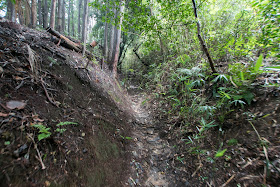



















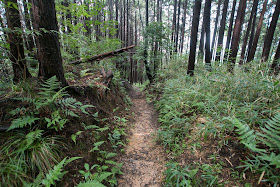












































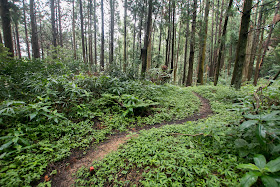









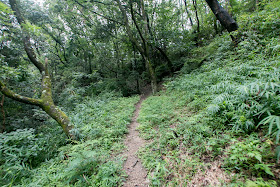













































































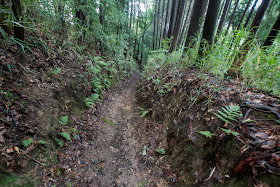













No comments:
Post a Comment